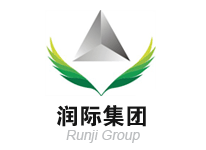Host

Sponsor
HISTORY
World Selenium & Manganese Forum 2014
April 23-25, 2014 Changsha, China
World Selenium Forum 2010
July 1-2, 2010 Nanning, China
Manganese Summit 2010
July 1-2, 2010 Nanning, China
- Content
- Manganese
- --- Will production of 200 series stainless steel rebound in 2015?
- As the foremost application for Chinese manganese flake, 200 series stainless steel witnessed a slowdown in production during 2014, with suspended projects in real estate and infrastructure construction to blame. However, the Chinese government approved a series of railway and airport construction projects at the end of 2014. Will this prove a turning point for the steel market?
- --- What changes can we see in the purchasing patterns of Russian manganese metal consumers?
- MMK, one of the three largest steel groups in Russia, established an office in Shanghai, China in the second half of 2014, covering raw material purchasing from Chinese suppliers. Does this mean Russian manganese metal consumers will increasingly cut out the middlemen and negotiate directly with suppliers? What are the priorities when a Russian end user is selecting his partners?
- --- Will demand for manganese flake continue to increase in South Korea in 2015?
- Leading steel mills in South Korea, such as POSCO, increased their purchasing of manganese flake in 2014, to the extent that the country became the leading destination for Chinese manganese flake. Will this surge in demand be renewed in 2015? What if the mills replace manganese flake with low carbon ferromanganese to lower their costs?
- --- Do other manganese products such as manganese nitrogen and manganese dioxide have a bright future over the next three years?
- Manganese dioxide production capacity expanded rapidly in 2014, but the market price showed a downward trend due to the abundant supply. The situation for manganese nitrogen appeared to be rather better with fewer suppliers. Will demand witness an uptrend in the foreseeable future? Or will other manganese products enjoy a sudden rise?
- --- Will European, American and Indian manganese briquette consumers turn to manganese flake in the next three years?
- Manganese briquette lost its price advantage over manganese flake after the Chinese government removed the export duty for the latter on the very first day of 2013, and most Japanese and South Korean end users have given up on the material and begun purchasing manganese flake. Will manganese briquette start to miss out on demand from Europe, America or India during 2015-2017?
- Selenium
- --- Will selenium prices continue to rise at the beginning then stay at a low level through the rest of 2015?
- In February 2014, participants witnessed the “Spring Festival Surge” in the Chinese selenium market, but also saw the prices plunge over the following months. It seemed the selenium market was unperturbed throughout the second half of 2014, but the stockpiling by certain exchanges simmered beneath the tranquil surface. Will the selenium price trend continue to lurch up and down in 2015?
- --- With production on the rise, who will pay for the global surplus as it continues to exceed downstream consumption?
- In 2014, the global production of selenium has exceeded 4,000t and the expansion of Chinese copper plants has enabled selenium production in China to reach 1,300t, up by 300t from 2013 figures. As we face an ever-increasing supply, who will pay for any left-over production which hasn’t been consumed by the downstream market?
- --- Lagging behind in technology, how can China rise to the technical challenges in developing high purity selenium?
- Unlike some countries which already possess well-developed selenium producing technology, most Chinese selenium suppliers have yet to acquire the ability to produce high purity products. However, if Chinese suppliers want to expand the applications for selenium, it is essential that they rise to the technical challenges. What is the choke point that hinders production of high purity selenium and in what ways should producers enhance the efficiency of their research and development?
- --- With the downstream market sluggish, how can Asian, European and American selenium suppliers adjust their sales strategies?
- The competition among global suppliers was extremely fierce in 2014. Will the leading suppliers relax their overseas agent conditions or adopt more flexible ways of cooperating? How will the supply strategies vary from country to country?
